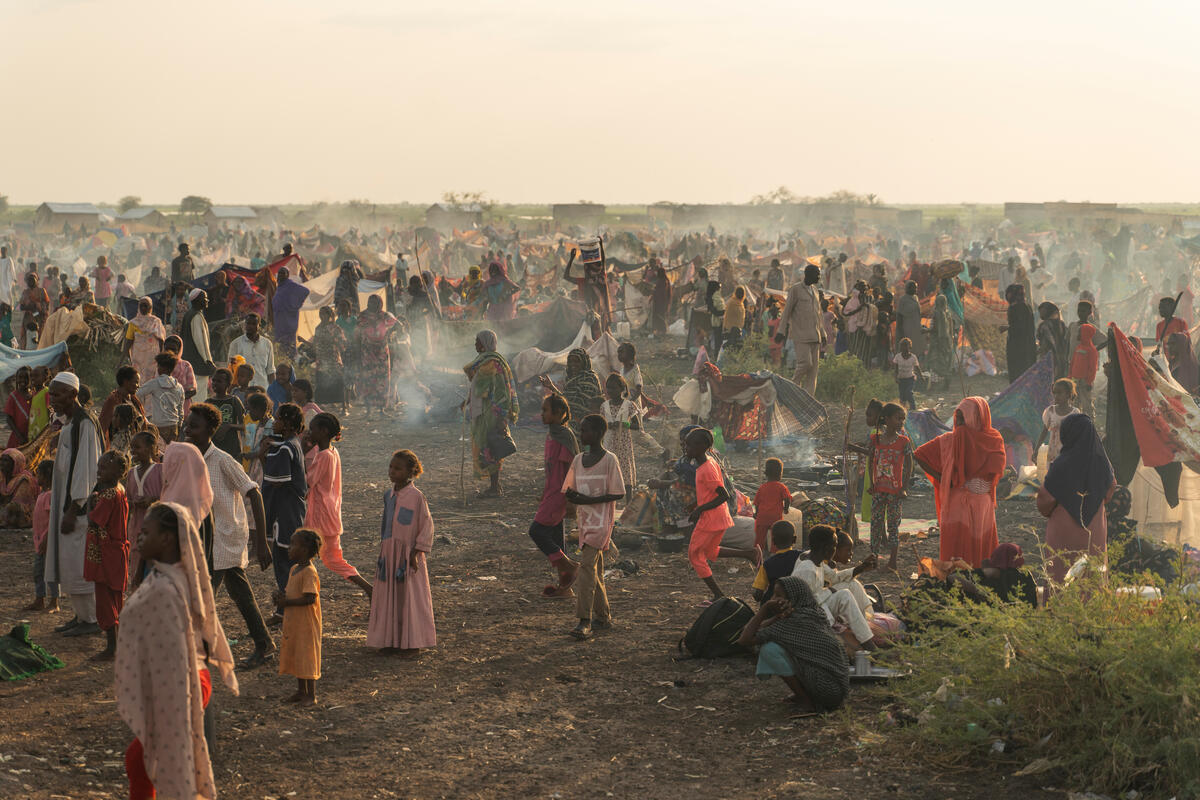South Sudan: at least 5,000 Congolese refugees arrive in Yambio area
South Sudan: at least 5,000 Congolese refugees arrive in Yambio area
A UNHCR emergency team estimates that at least 5,000 refugees from the Democratic Republic of the Congo (DRC) have arrived in the Yambio area, in the Western Equatoria region of South Sudan, within the past two weeks. A three-member UNHCR team travelled from our office in Juba to Yambio over the weekend to assess the needs of the new arrivals and to arrange assistance for them. The team reported that an estimated 150 Congolese are still crossing daily from the DRC to the villages of Sakure, 15 km south of Yambio, and Gangura, 30 km south-west of Yambio.
Refugees told UNHCR that they fled their villages near Dungu, in north-eastern DRC, because of ferocious attacks by members of the Lord's Resistance Army (LRA). In Gangura, our team spoke to several refugees who gave harrowing accounts of their flight. One refugee, who had just arrived on a bicycle, said that his wife and daughter had been abducted. It took him a week to travel to Gangura because he had to evade LRA roadblocks and ambushes - obstacles cited by other refugees as well.
In Sakure yesterday, local authorities told the UNHCR team they were very concerned by the security situation in north-east DRC, indicating that they had information that Moro village, some 58km inside the DRC, was attacked on Sunday. They said that children were abducted, houses burned and inhabitants endured a lot of violence. In Sakure, refugees are sheltering together with the local population. UNHCR teams are scheduled to go back to Sakure and Gangura tomorrow (Wednesday) to continue interviewing refugees and start registering them.
Refugees wounded during the LRA attacks in DRC during the past two weeks are being treated at the MSF clinics in the region. All refugees, men and women, said that they have no wish to return home until the threat of the LRA has been removed. They also stressed that they had anyway nothing to return to as their homes and belongings have been destroyed. They have been able for the moment to survive thanks to the generosity of the local population who shared their food stocks with them. UNHCR is trying to organize as soon as possible a food distribution but is facing logistical problems as the roads are in very poor conditions in the area.
UNHCR is also working closely with UNICEF and WFP, who both have a presence in Yambio, to respond to the influx. Immediate concerns include the proximity of refugee settlements to the border but again the extreme deterioration of the roads remains the main obstacle to move people to safety further inland.







